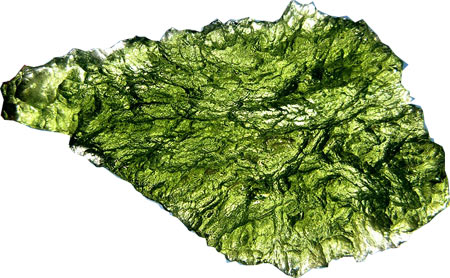Info-centr
Infocentre
Moldavite
 We also offer a unique and exciting collection of jewellery with Moldavite. Choose from a variety of styles and shape.
We also offer a unique and exciting collection of jewellery with Moldavite. Choose from a variety of styles and shape.
Moldavite is classed in the Tektite Family as the result of a Meteorite impact nearly 15 millions years ago. Moldavite is a very rare and precious stone. It is “The Emerald” that fell from the sky & exists only in a small area of the Czech Republic. The stone truly is extraterrestrial.
Moldavite (Czech: Vltavín) is an olive-green or dull greenish vitreous substance possibly formed by a meteorite impact, which would make it one kind of tektite. They were introduced to the scientific public for the first time in 1786 as “chrysolites” from Týn nad Vltavou in a lecture by professor Josef Mayer of Prague University, read at a meeting of the Bohemian Scientific Society (Mayer 1788). Zippe (1836) first used the term “moldavite” derived from the town of Moldauthein (Czech: Týn nad Vltavou) – now in Bohemia (the Czech Republic), from where the first described pieces came from.
The total amount of Moldavite scattered around the world is estimated at 275 tons.
There are typically two grades of moldavite: high quality, often referred to as museum grade, and regular grade. Museum and regular grade moldavite can be told apart by the way they look: The regular grade pieces are usually darker and more saturated in their green colour, and the surface is seen as closely spaced pitting or weathering. This type sometimes appears to have been broken apart from a larger chunk. Moldavite is also found to be compatible with borosilicate glass and can be fused to it with ease.
The museum grade has a distinct fern-like pattern and is much more translucent than the regular grade. There is usually a fairly big difference in the price between the two. The museum grade “flower bursts” are much more prized by the connoisseur. High-quality moldavite stones are often used in hand-crafted jewellery and thus enter the market away from mainstream jewellery fashions, more centred on art and craft, and as such have gained an almost cult status.
Comments are closed.